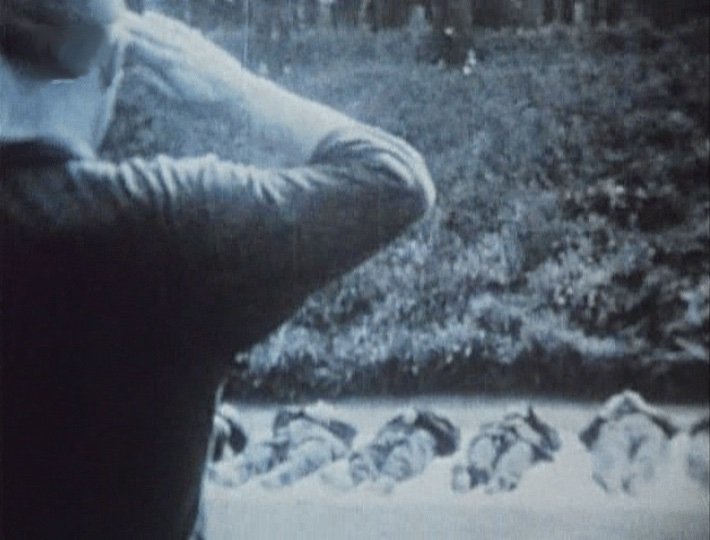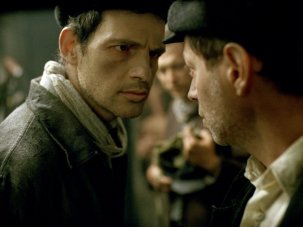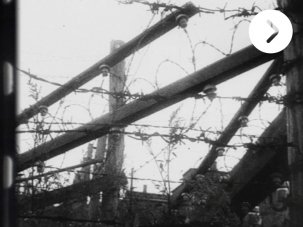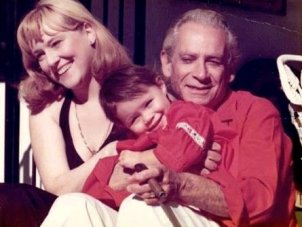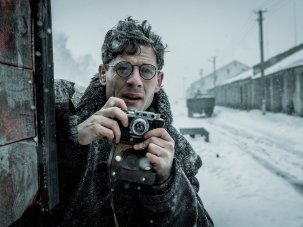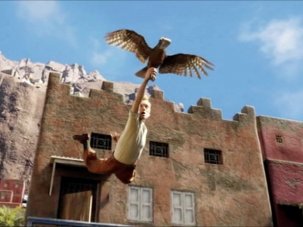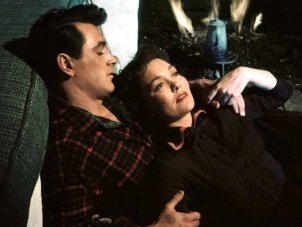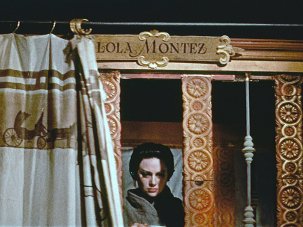Gillo Pontecorvo’s Kapò (1960) occupies a curious position within cinema – or, more precisely, cinephile – history. Although the film itself is virtually forgotten (it is rarely screened, and remains unavailable on DVD in the UK), it has nonetheless become a crucial reference point for aesthetic debates thanks to Jacques Rivette’s article De l’Abjection (On Abjection), which appeared in the June 1961 issue of Cahiers du Cinema. After quoting both Jean-Luc Godard’s “les travellings sont affaire de morale” (“tracking shots are a question of morality”) and Luc Moullet’s earlier claim that “la morale est affaire de travellings” (“morality is a question of tracking shots”), Rivette writes: “Look at the scene in Kapò where the character played by Emmanuelle Riva commits suicide, throwing herself onto an electrified barbed-wire fence. The man who decides, at this moment, to utilise a forward tracking shot to reframe the woman’s corpse at a low angle, making sure her raised hand is precisely positioned in the resulting composition, that man deserves nothing but our most profound contempt” (my translation).
The implication, of course, is that Pontecorvo’s camera movement is voyeuristic, and thus immoral. Rivette’s comments have not merely haunted the distribution and discussion of Kapò, but have to all intents and purposes replaced the work itself. Serge Daney even wrote a lengthy piece on De l’Abjection in which he boasted of never having seen Pontecorvo’s film.
So it may be necessary to point out that Kapò deals with the Holocaust, a subject many commentators regard as taboo. The key statement here was made by George Steiner in 1963, two years after Rivette’s text appeared: “In the presence of certain realities art is trivial or impertinent… The world of Auschwitz lies outside speech as it lies outside reason.”
If, contra Steiner, we assume it is possible to tackle the Holocaust onscreen, we might well ask what a ‘moral’ camera movement would look like in such a context. Perhaps the best answer is provided by that reel of silent footage shot by Samuel Fuller with a 16mm Bell & Howell camera when his infantry unit (‘The Big Red One’) liberated a concentration camp in the Czechoslovakian town of Falkenau during May 1945. Fuller’s footage was incorporated into a 1988 documentary by Emil Weiss which, in its English version (it was co-produced and screened by the UK’s Channel 4) bears the onscreen title Falkenau the Impossible: Samuel Fuller Bears Witness (the French version is called Falkenau, Samuel Fuller témoigné, while Fuller in his memoir A Third Face refers to it as Falkenau, Vision of the Impossible).
The most striking shot here was taken outside the camp, and begins by showing the town of Falkenau. With a field occupying the lower part of the frame, and a tree that seems to be protecting the houses, this would appear to be a bucolic setting, an idyllic place in which nature and culture have united to enable a lifestyle of calm and peace. Yet Fuller does not permit the town to remain visible for long, turning his camera to the left to reveal barbed wire surrounding a concentration camp located on a small hill upon which newly released prisoners are sitting. Continuing to move leftwards, the camera discovers Falkenau’s leading citizens reluctantly carrying out that task they have been assigned by the American soldiers – dressing those emaciated corpses that have been discovered inside the camp.
The relevant shot runs from 13 seconds to 54 seconds into this clip
There is clearly a thematic element to this camera movement. Fuller is connecting normality (the town) with abnormality (the results of that inhuman behaviour which had been taking place inside the camp), a theme which will be encountered several times in his oeuvre.
Yet while shooting this material, Fuller was certainly thinking in more concrete terms, primarily concerned not with communicating ideas, but rather with collecting evidence. As he reveals in the commentary recorded for Emil Weiss, Falkenau’s inhabitants had denied all knowledge of what was going on inside the camp. While watching the footage described above, Fuller notes: “this is a shot showing you the close proximity of the town of Falkenau with the camp. There are the houses… it’s one shot. There’s no cut… It’s one pan. You can see how close it is.”
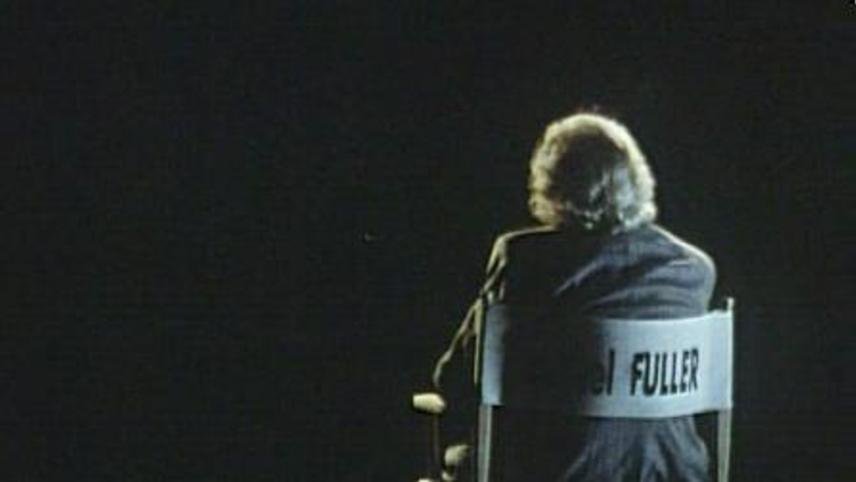
Falkenau (1988)
And indeed you can. By moving his camera in a particular direction across a specific terrain – from this to this via this – Fuller demonstrates that, unless they had spent several years failing to look out their windows, there is no conceivable way Falkenau’s residents could have failed to realise they were living next door to people who were being starved to death.
If Pontecorvo’s track-in on a dead body can be accused of aestheticising genocide, no such charge is likely to be be laid at Fuller’s door. Although, like any stylistic decision, it can, and indeed should, be discussed aesthetically (to do otherwise would involve mystification), Fuller’s pan from town to corpses is informed by events that precede formal concerns – not just the reality of the camp, but also the reality of the filmmaker’s response to what he is seeing. Fuller’s stylistic practices are completely opposed to Pontercorvo’s, and have a far purer intention: as he notes towards the end of Weiss’s documentary, “With film we can make progress in history, in civilisation. So that nobody can lie.”
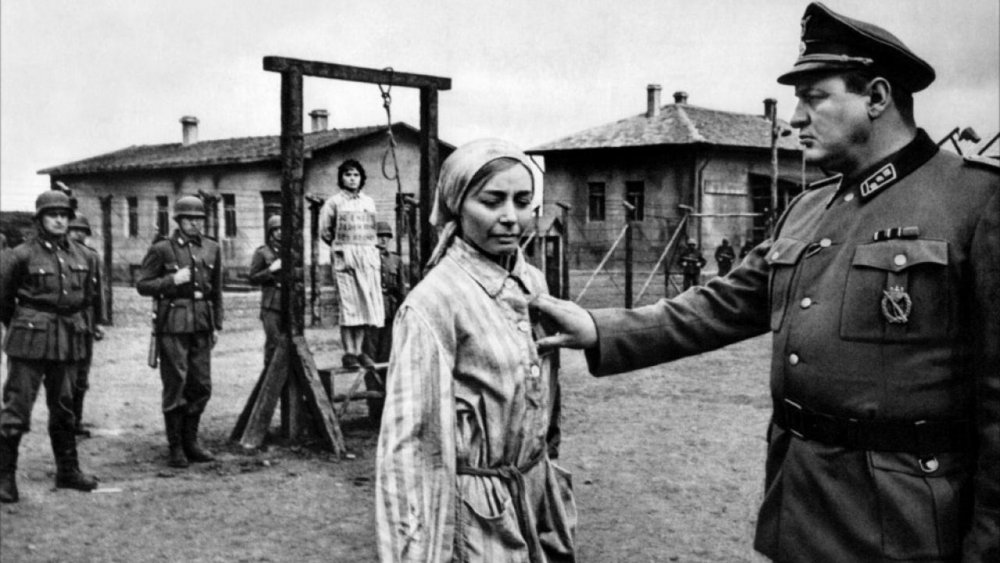
Kapò (1960)
This recalls Godard’s description of cinema as “truth 24 times a second”. Yet such sentiments can hardly have the same impact in an era when it has become possible to convincingly fake reality onscreen, to create an entirely false computer-generated image that has the feel of actuality. The debate Rivette and Steiner were engaged in presupposes a situation in which images (as well as words) are important enough to be attributed moral value. The idea of distinguishing between Kapò and the Falkenau footage may appear academic now that we are all swimming in a vast sea of moving images, many of which we manufacture ourselves with barely a moment’s thought. The possibility of an image having or lacking a moral purpose has come to seem increasingly quaint (these days, outrage is more likely to be generated by the activities of those individuals involved in creating the images). When it comes to Fuller and Pontecorvo, we may recall the words with which Stanley Kubrick ended Barry Lyndon: “They are all equal now.”
-
The Digital Edition and Archive quick link
Log in here to your digital edition and archive subscription, take a look at the packages on offer and buy a subscription.




